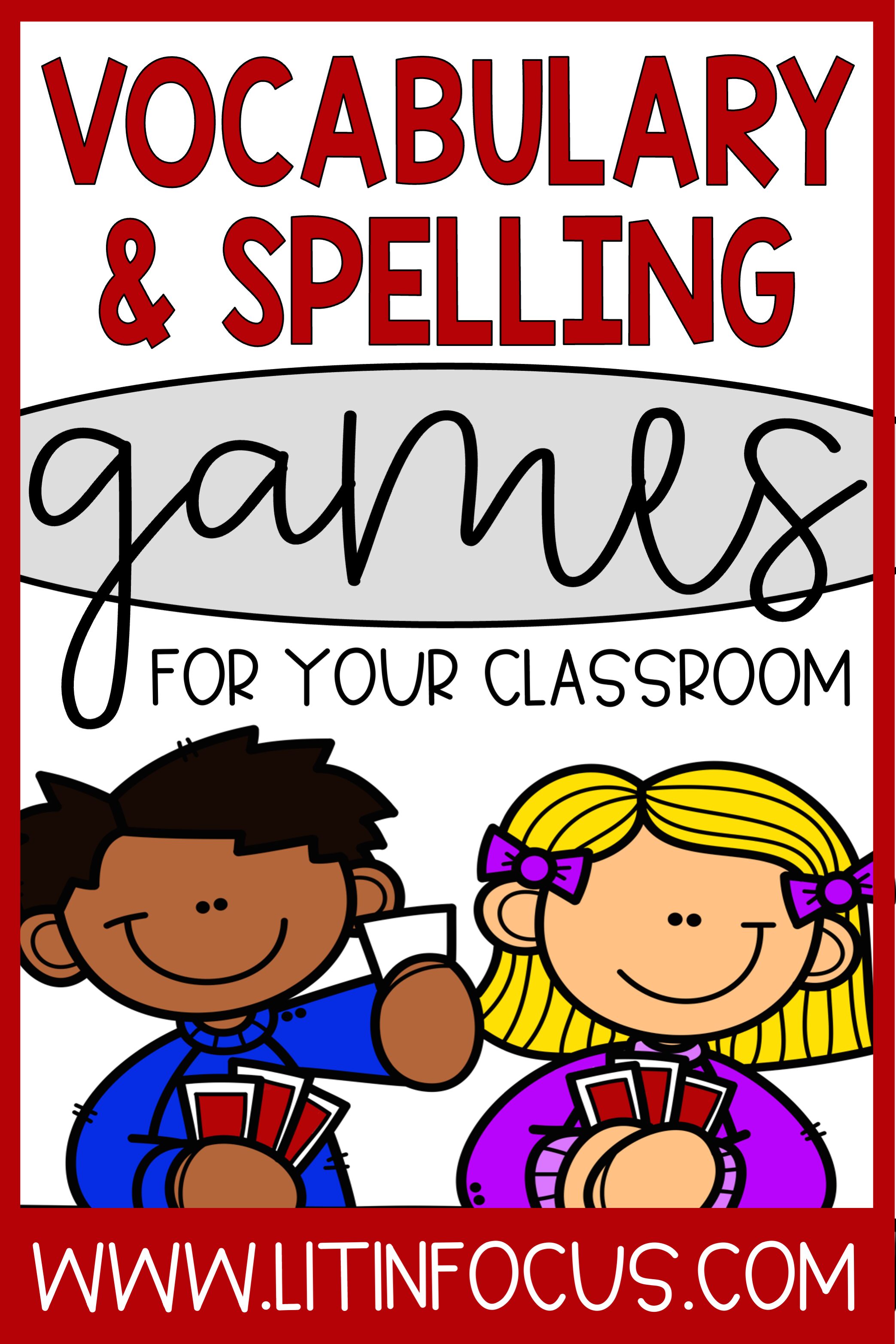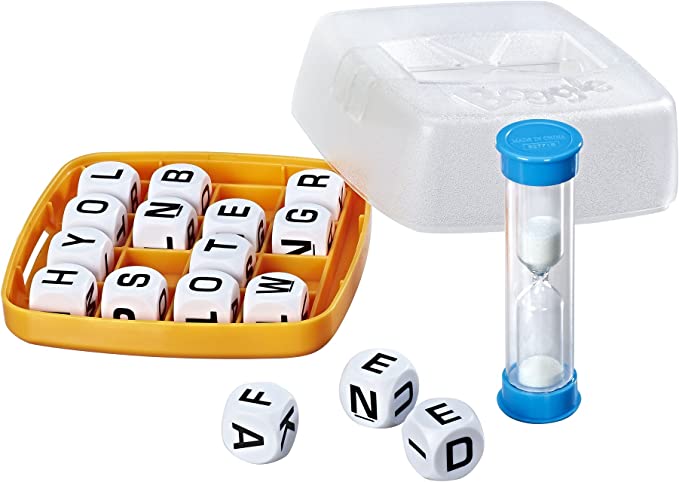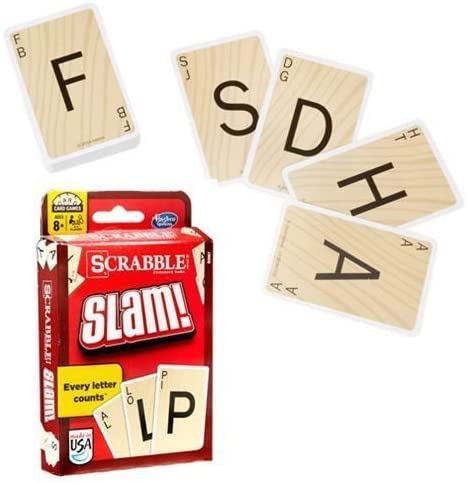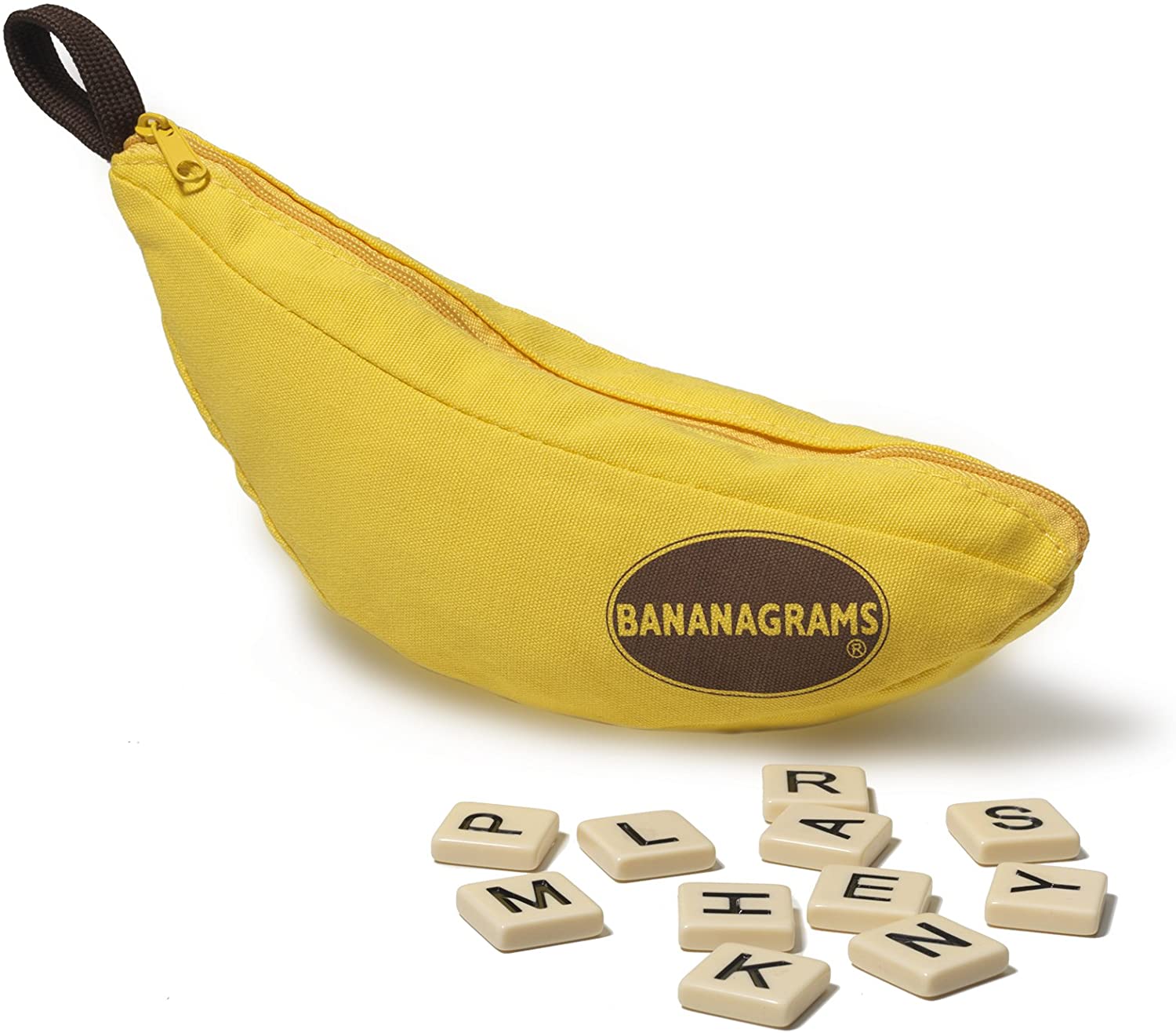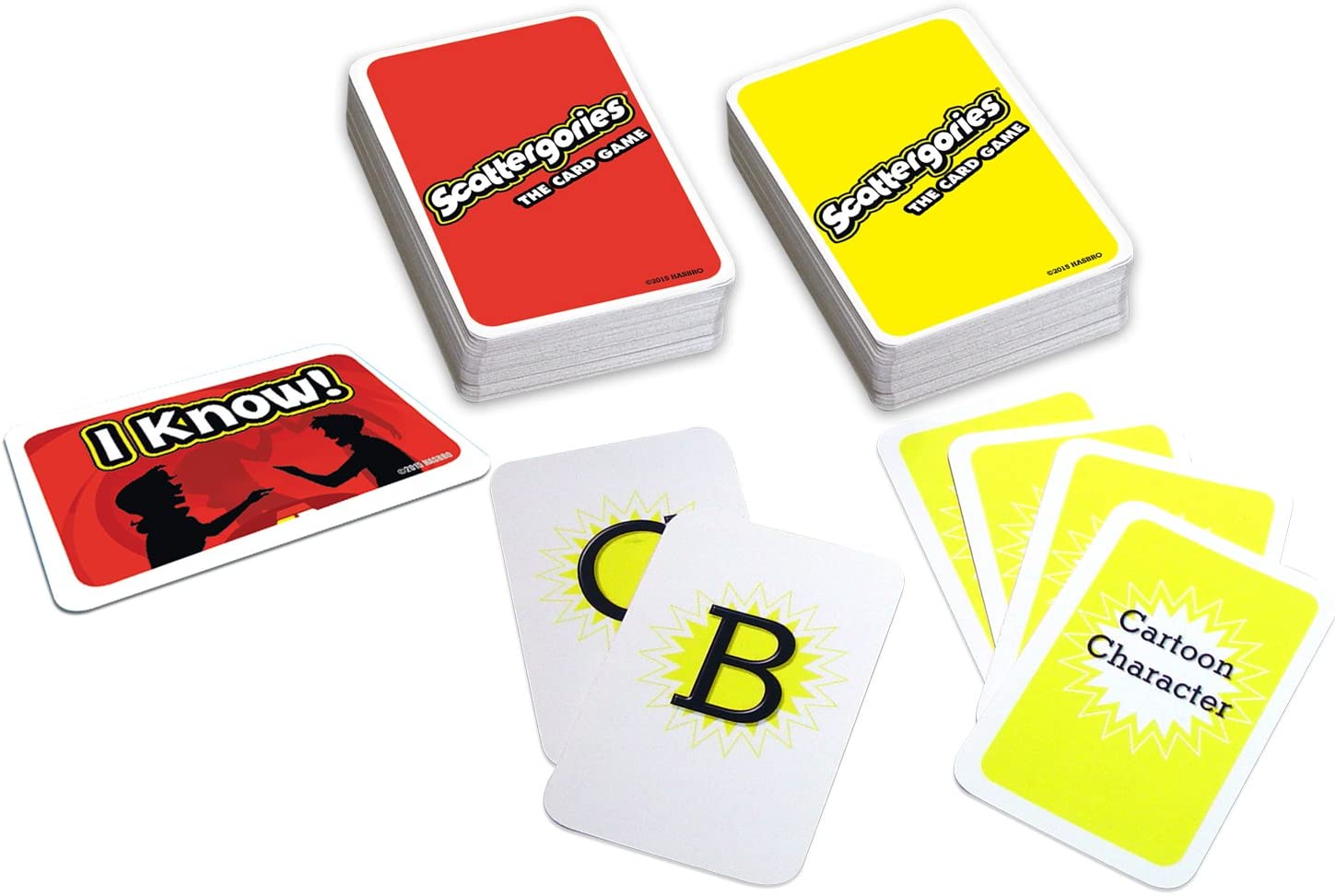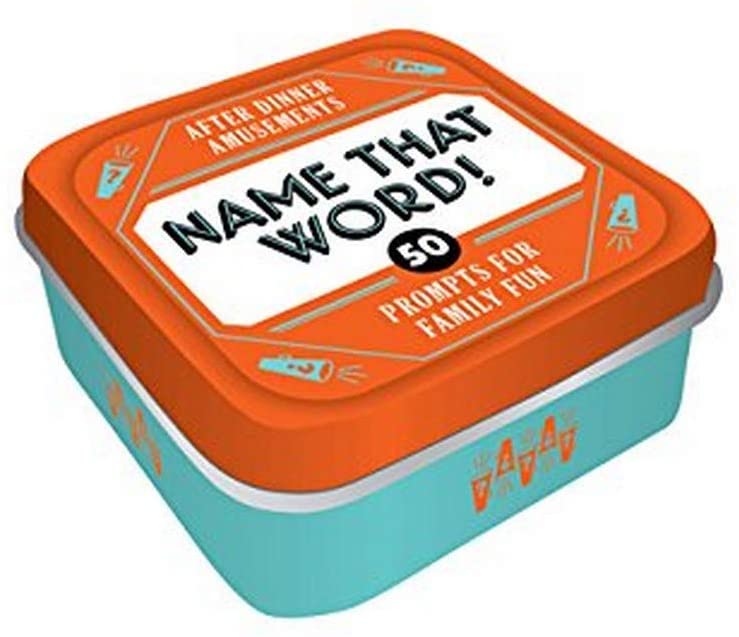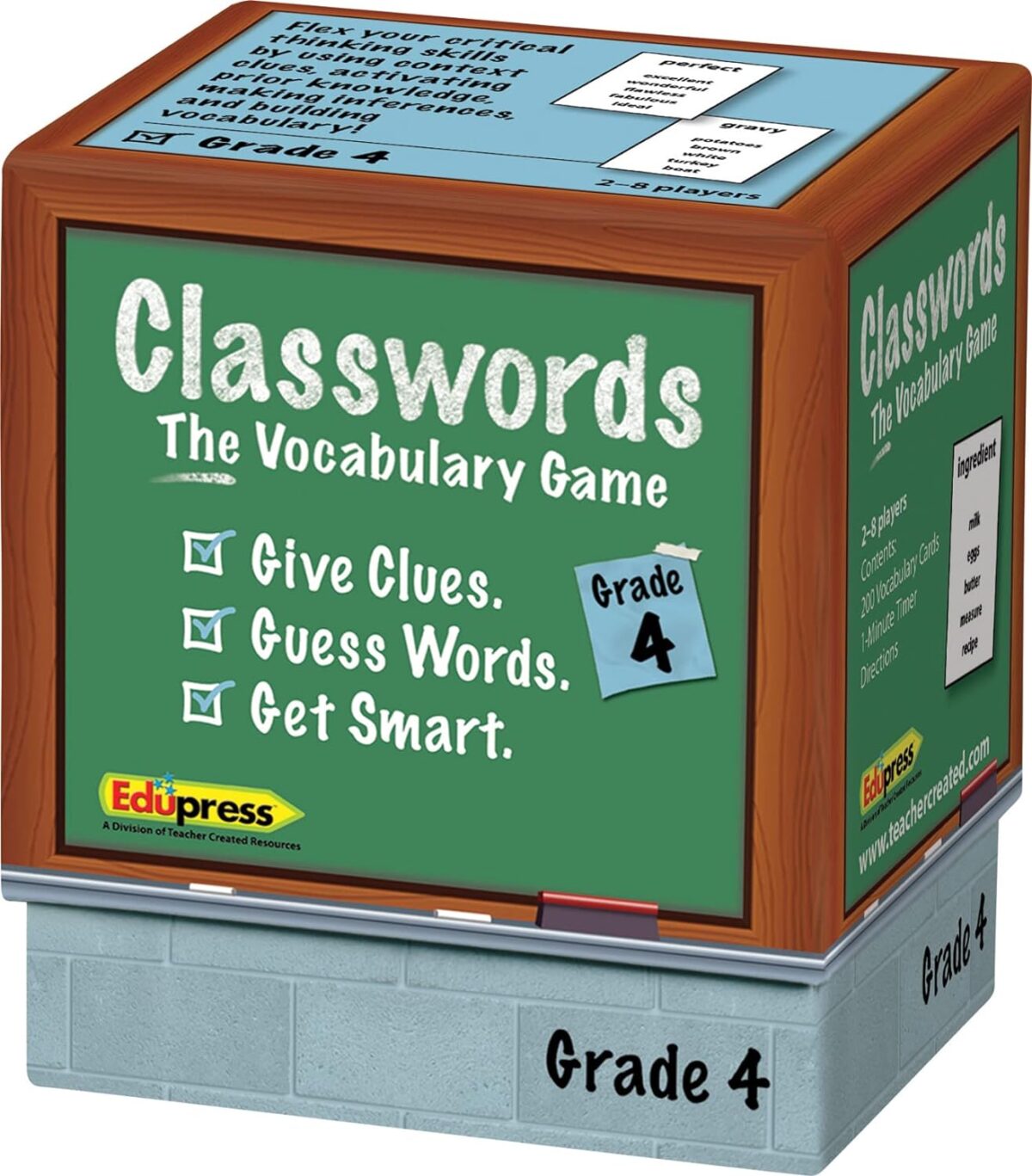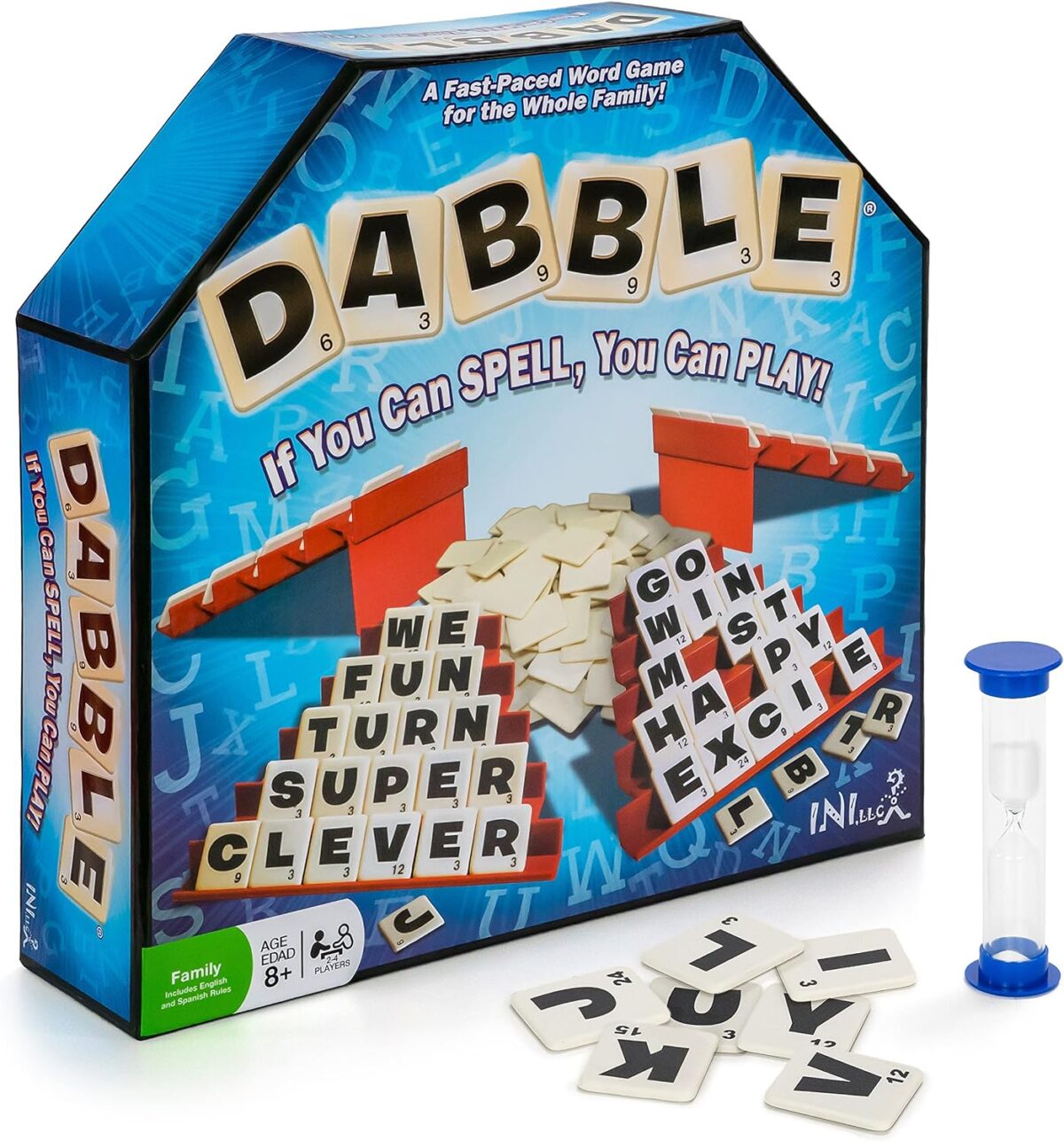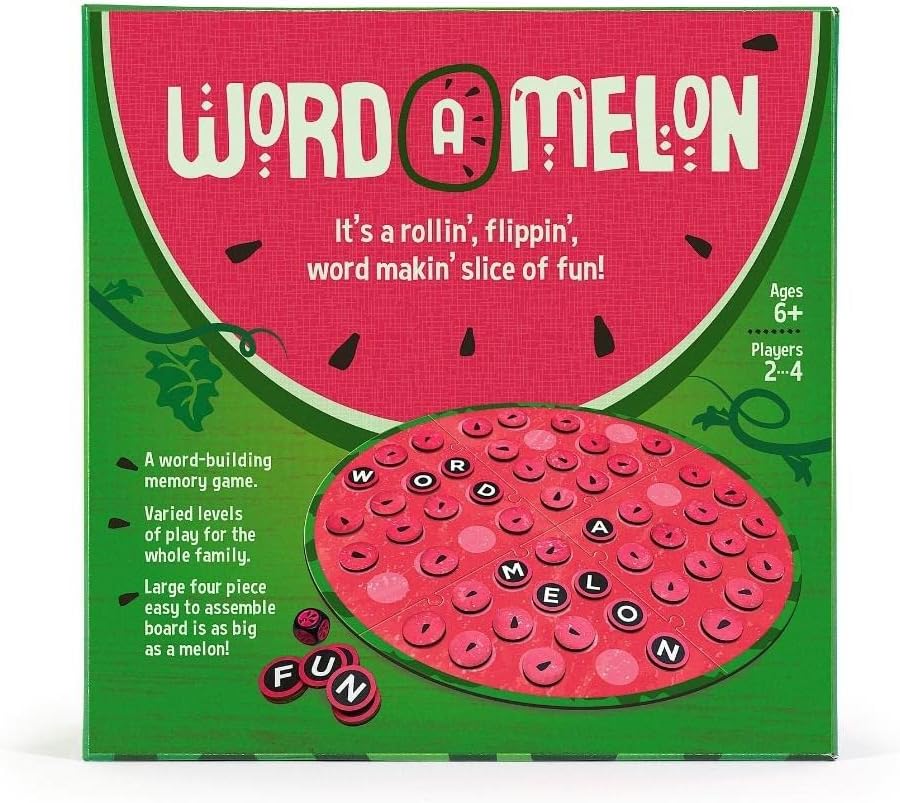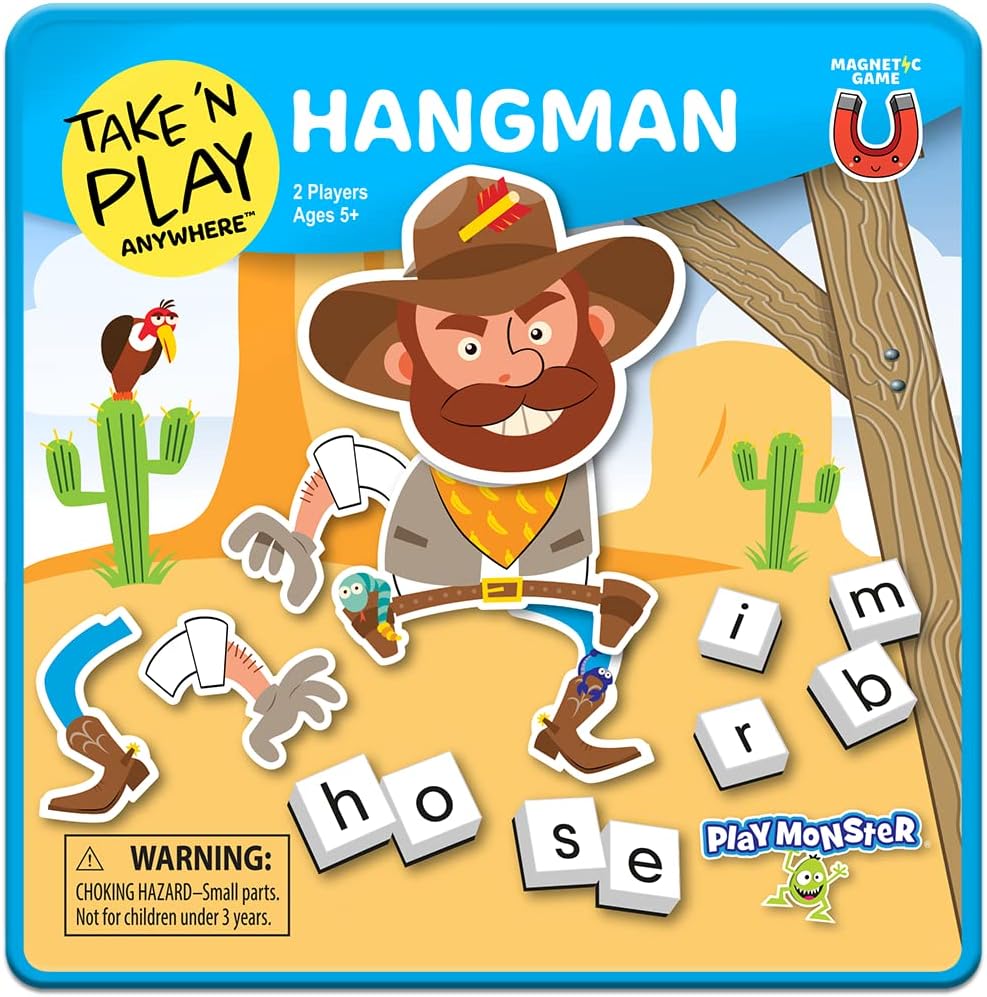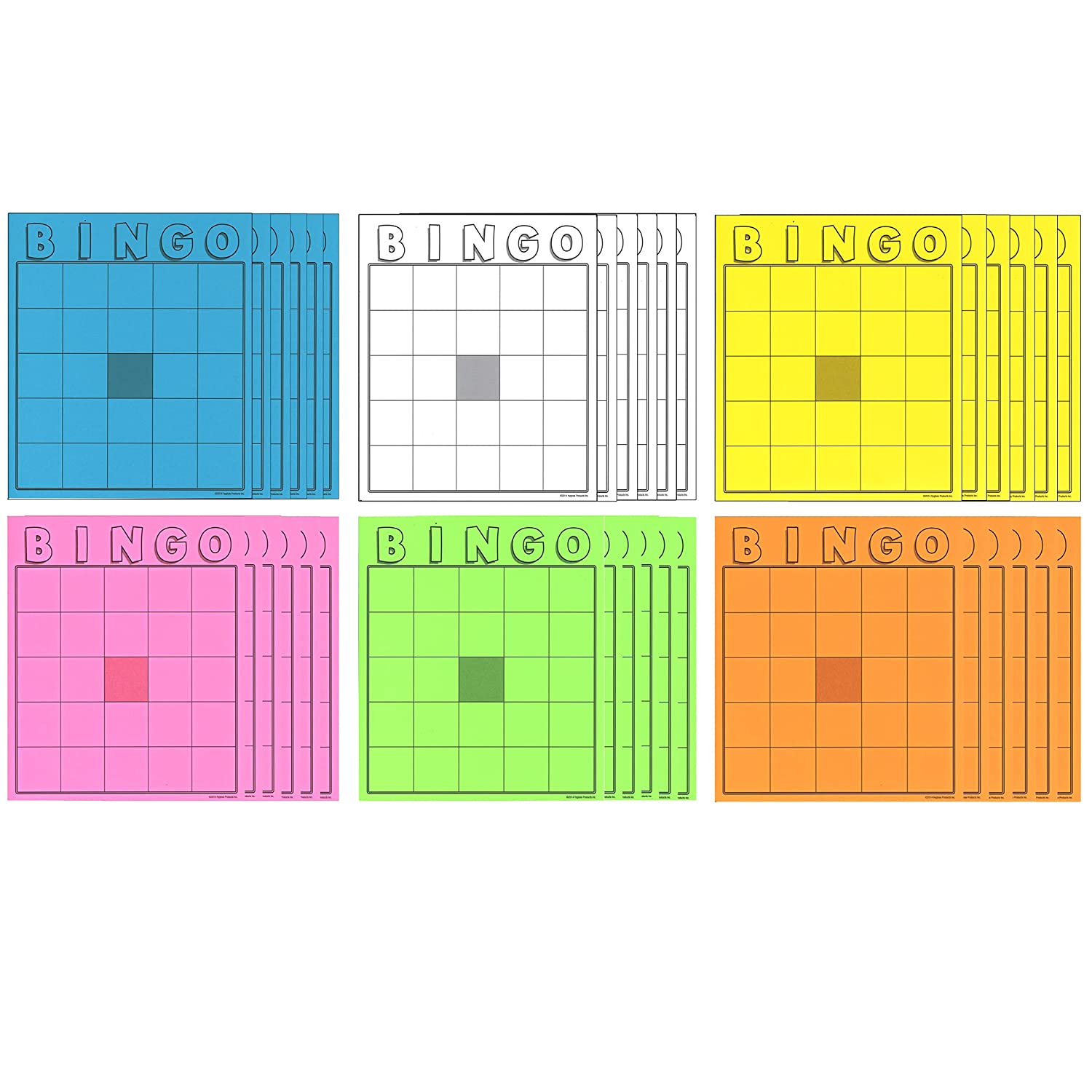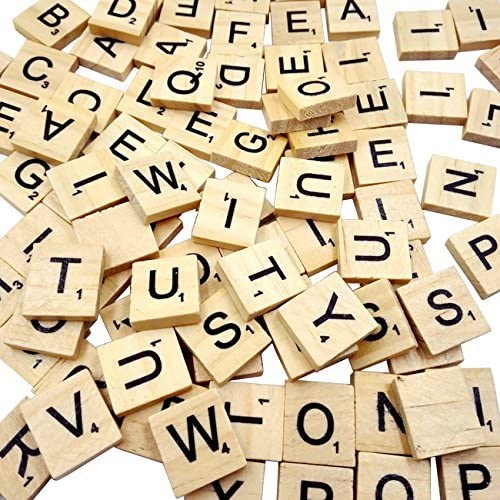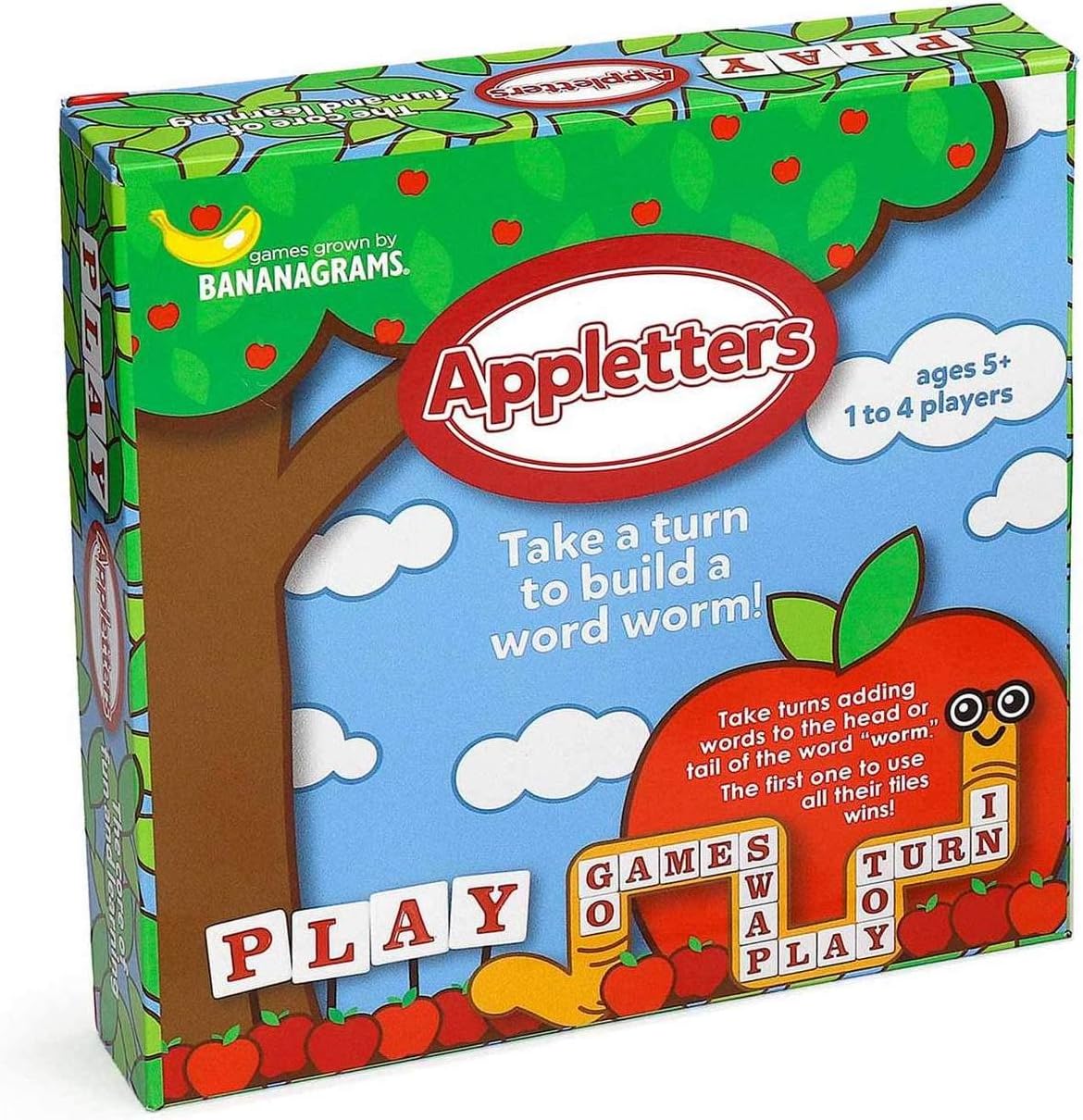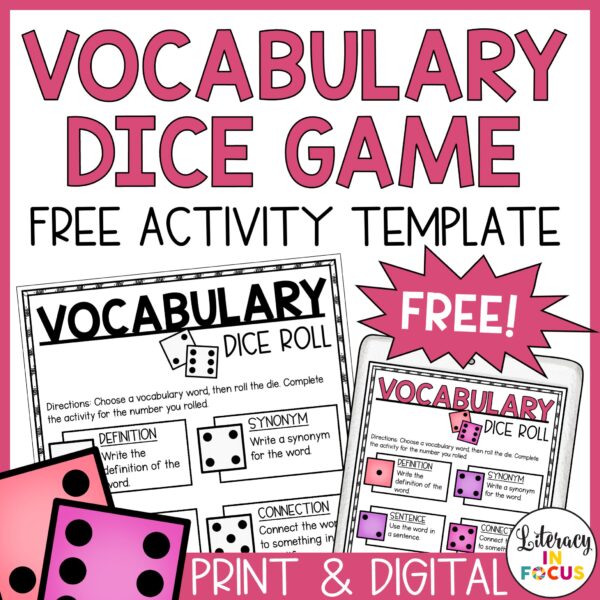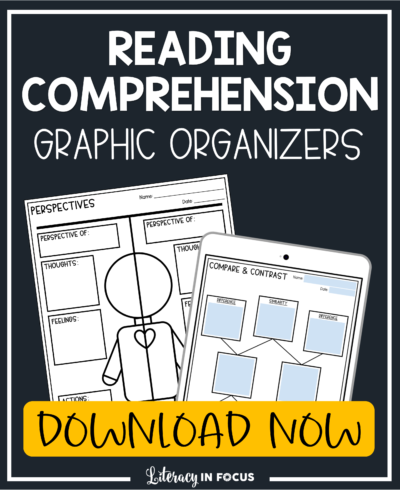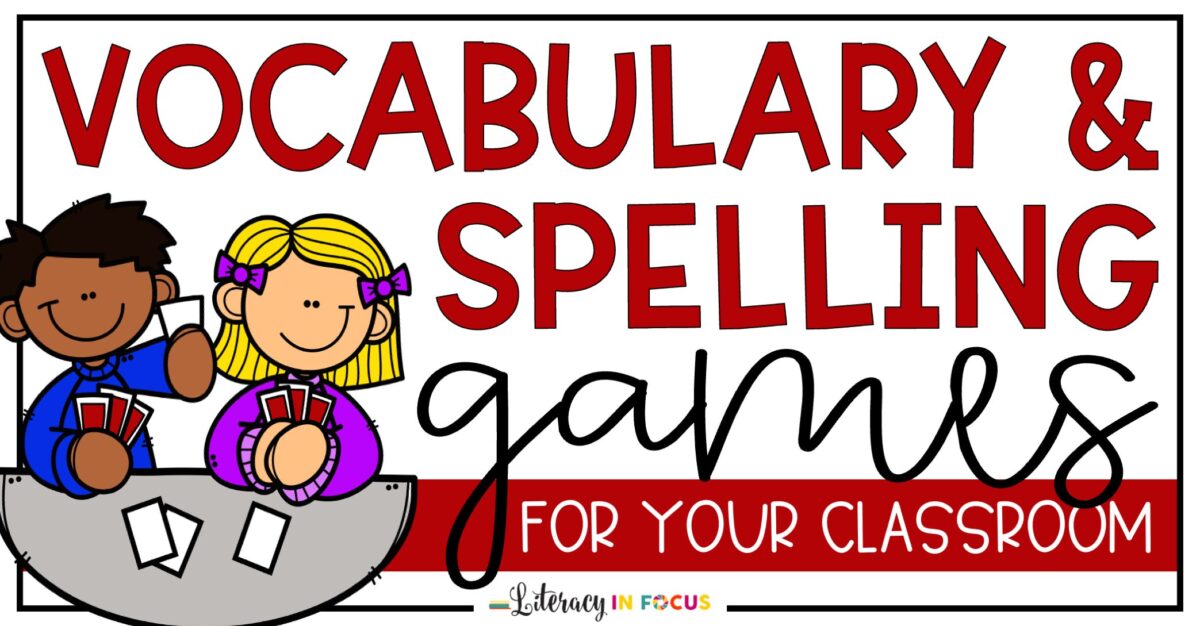
Vocabulary & Spelling Games For Your Classroom
I know what you’re thinking. It’s hard to find time to squeeze in all of the mandated curriculum, so adding games to the mix is next to impossible. We all know that making learning fun and engaging is something our students need, but it isn’t always easy to accomplish. There are many different games that support learning and are backed by research. The games listed below make word work fun and functional! Plus, they won’t break the bank.
Boggle
The versatility Boggle provides makes it a perfect game for any classroom. To play, students have three minutes to construct words using adjacent letters in the 4×4 grid. The tray of 16 cubic dice is shaken and adjusted before each game, which leads to endless combinations and limitless fun. The mere practice of searching for and building words supports lexicon enrichment.
Before you starting adding up the number of Boggle sets you will need to accommodate the growing number of students in your classroom, know that you can achieve success with just one set! There are two options that make whole-class play possible using only one purchase of the Boggle game: 1) Utilize your document camera to project the unique dice layout. 2) Copy the grid on the board for students to view. Depending on the unique needs and abilities of your students, game play can be done individually or cooperatively. Check out Big Boogle too!
Scrabble Slam
The card game version of Scrabble is called Scrabble Slam. It’s cost efficient, easy to implement, and perfect for down time or a rainy day. In a game of Scrabble Slam, players race to get rid of their cards by changing the existing four letter word. Played in groups of two-four players, Scrabble Slam works well in most classroom settings. On days when you have more time, you can let students play the original Scrabble board game or Scrabble Junior.
Bananagrams
Bananagrams is perfect for the classroom because it doesn’t require a pencil, paper, or a game board . The only thing necessary for game play is the Bananagram letter tiles. In order to play, students draw a set number of tiles to use in creating their individual intersecting word grids. The first player to use all of their letter tiles wins. Because the game involves independent word creation and development, yet still includes a healthy dose of competition, Bananagrams is an appropriate and acceptable game for diverse classrooms.
The original game is available in 16 languages and is ideal for ages seven and older. My First Bananagrams uses lower case letters and digraphs, perfect for developing readers. Bananagrams Duel is a fast paced two player game for small spaces or travel.
Scattergories
Scattergories is a game that will have your students begging for more. It’s just plain fun. The original version of the game is a bit too cumbersome for classroom use, but the card game can be played anywhere and anytime. Students begin play by flipping over a category card and a letter card. The first player to think of a word that starts with the selected letter and meets the category criteria wins that round. The player that wins the most rounds wins the game. The card version can also be adapted for whole-class play. Divide the class into teams, display seven to ten different category cards and only one letter card. Teams compete (within a set time limit) to find words for each category that begin with the selected letter. Points are awarded to teams that have original words. If two teams have the same word, that word cannot count toward team points.
Name That Word
Name that Word is a word game similar to Taboo. Students have to get their teammates to guess the mystery word without using any of the forbidden words listed on the game card. The team that guesses the most words in the allotted amount of time wins. This game is great for the classroom because the only game pieces it requires are the word cards and a timer.
Classwords
Classwords is another vocabulary game that’s similar to Taboo. Developed by teachers, Classwords builds vocabulary and critical thinking skills. It also gives students a chance to activate prior knowledge, use context clues, and make inferences. Each game includes 200 word cards, a one-minute timer, and extra ideas to enhance learning. The game doesn’t involve a lot of set up or explanation, so it’s great if you have a few minutes of extra time. Classwords is available for Grade 2, Grade 3, and Grade 4.
Dabble
In this fast paced word game, players start with 20 letter tiles. When the timer starts, players race to spell 2, 3, 4, 5, and 6-letter words. The first person to spell all five words first wins. This game is perfect for older students who like a challenge!
Word a Melon
Memory + Word Search = Fun! Your students will love this word building memory game. 2-4 players take turns rolling the die, flipping the cardboard letter chips, and creating words with the overturned letters. Unused letters are flipped back over so players have to remember where they are! The player with the most chips wins!
Digital Spelling and Vocabulary Activity Templates
“Editable and easy to use. Lots of different options for teachers to customize based on their needs. Google friendly! Was able to leave for a day when I was gone. Thanks!” -Alexa H.
Hangman
This magnetic hangman game is perfect for the classroom! Everything students need to play the classic word game is included in a magnetic case. It’s a fun way to learn content area vocabulary or weekly spelling words. Your students will LOVE it!
Vocabulary BINGO
Everyone loves BINGO! Use these blank BINGO cards to create a custom game for your list of vocabulary words. Pass out a game board to each student. If you want to reuse the boards for each new list of vocabulary words, laminate them and have students use dry erase markers. To play the game, pass out a game board to each student. Have students write a different vocabulary word in each box. You will need at least 24 terms. Tell students they get to decide which box to put each word. That way, all the boards will be different. Start the game by giving students a definition. If students have the word that corresponds with the definition, they get to cover it with a game piece. The first person to get a BINGO (five in a row) is the winner.
Hedbanz Guessing Game
You can use the words that come with the game, or you can create your own word cards from your class vocabulary list. To play, students take turns putting a word card on their headband, so they can’t see the word, but the other players can. The student with the headband tries to guess the word by asking teammates yes or no questions. If you split students into small groups or teams to play the game, you can add a time limit to create urgency and competition between teams. Each player on the team gets a chance to wear the headband. After all players have had a chance to wear the headband, the team that guessed the most words wins.
Race to Unscramble
Use any list of spelling or vocabulary words to play this game. Fill small containers with the letter tiles required for each spelling or vocabulary word. Split students into two teams. Teams race relay style, each person opening a container and putting the letters in the right order to spell the vocabulary word. The first team to unscramble all their containers is the winner. Make the game more challenging by requiring students to add a definition and a sentence after unscrambling each word.
Appletters
Need a game for beginning readers? Check out Appletters! 1-4 players take turns to build a word worm in this fun tile game. The first player to use all their tiles by adding letters to the head or tail of the word worm wins. Appletters is quick and easy to learn, so it’s great for young learners.
Vocabulary Dice Roll
Use your own list of vocabulary words to play this game. Students roll the die for each vocabulary word. The number on the die corresponds with the activity students complete for that word. Ideas for each number are listed below.
- 1: Define the word.
- 2: Use the word in a sentence.
- 3: Draw a picture to represent the word’s meaning.
- 4: Write a synonym for the word.
- 5: Connect the word to something in your life.
- 6: Write an antonym for the word.
FREE Vocabulary Dice Roll Game Template
Taking the time for students to play games doesn’t have to make you feel like you are giving up your valuable instructional time. Research shows that multiple exposures to a word are required before accurate application is possible. Implementing words games in your classroom is a student-centered way to support vocabulary growth and make learning fun.
This post contains affiliate links. Click here to read my affiliate policy.
